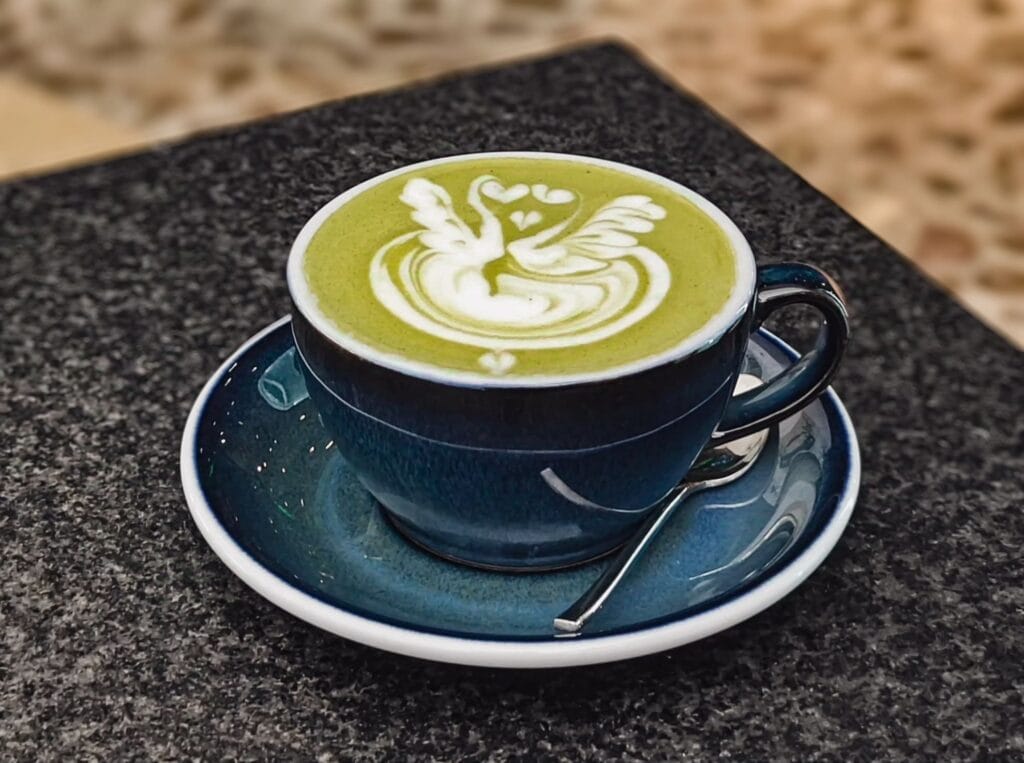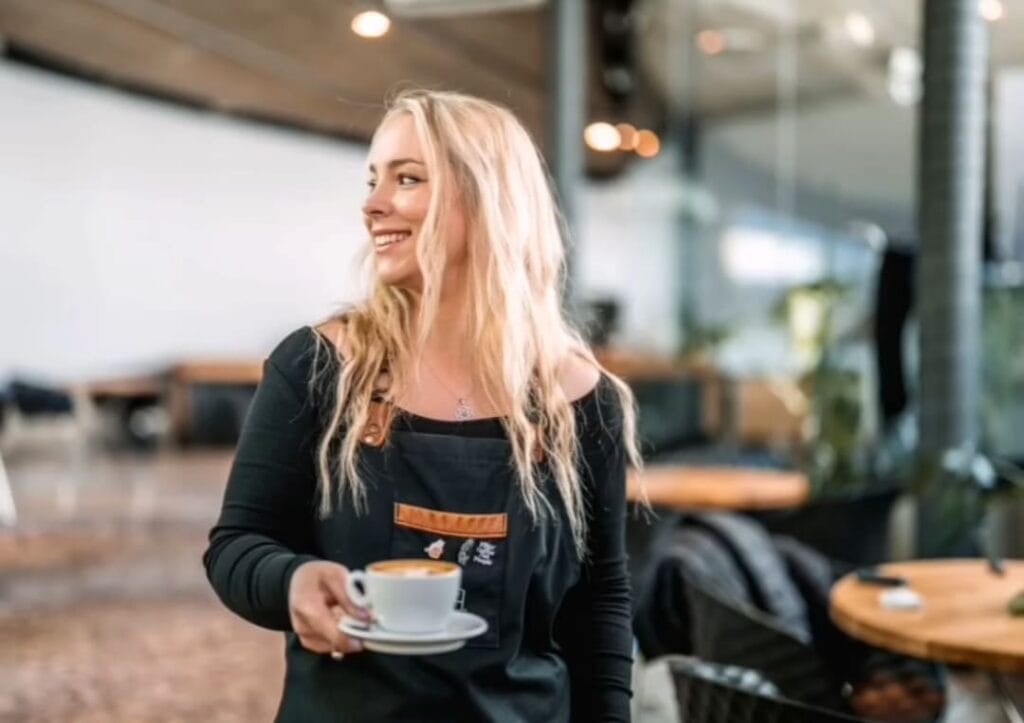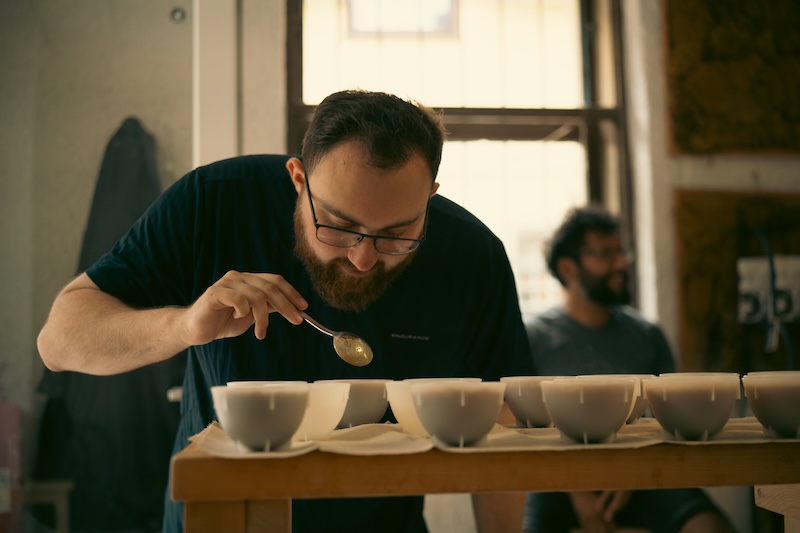ALL POSTS
ALL POSTS
Slovene Latte artists: Sandra Pasic
6 min read
Last edit: Jun 14, 2025

Latte art in Slovenia, while being a relatively young practice in coffee shops, is growing both in the number of skillful baristas and the quality of dedicated coffee events.
In this interview, we continue to meet the best latte artists in Slovenia.
This time we spoke to Sandra Pasic, a professional barista, competitive latte artist with the champion title (2016), and recently a latte art battle judge.
Interview
Lev: Hi Sandra! Thank you so much for taking the time to talk.
Sandra: Hey Lev. You’re welcome. Thanks for inviting me.
Lev: First up, I would like to ask how you became a barista.
Sandra: Well, I’ve been working in hospitality at large for around 20 years already. So of course I didn’t start as a barista. I worked as a student in different bars and restaurants. Basically, I was just a waitress, but I occasionally filled other positions. Maybe 12 years ago or 13 even, I started working as a dedicated barista and also that was when I first heard about latte art. Before that, I never saw coffee with a pattern on it.

Lev: How did you start practicing latte art?
Sandra: I was always trying to make beautiful coffees by topping them with cocoa or else. I saw the happy reaction of people. I served those pretty cups of coffee with sprinkles or a dash of cinnamon powder and it made customers a bit happier. Then I found out about latte art and I was actually lucky because I was working in a bar alone, so I had to prepare every coffee while binge-watching videos about latte art and exploring, just discovering and practicing the patterns. And then of course I tried every day when I was working, I made like 300 coffees per day or something like that. And for every coffee I tried to draw something. So basically I taught myself.
Lev: So you didn’t have mentors until very late in your career and you’re self-taught.
Sandra: So, yes. My first master class for latte art was with Agnjeshka Royevska. When she came to Ljubljana. That was like 6 years ago. So that’s when I first got my professional advice for improving my latte art. And it helped me to go to the next level.
Lev: What is your opinion on latte art courses? Do you think it is a necessary thing to do to become a successful barista?
Sandra: I would say I took the hard path by learning by myself. You know, it’s easier if someone shows you the basics or maybe corrects your mistakes at the beginning because you can improve faster. For me, it took a while to really master the Heart, the Rosetta, the basic patterns, and then the symmetry and the contrast. I was experimenting a lot and learning from my mistakes. So yeah, I think you can learn by yourself, sure. But it helps if someone shows you the basics at the beginning. And those basic patterns are really good enough.

Lev: Latte art is one of the most popular kinds of formats to compete in. We had a competition just now and you were the judge. So have you ever competed in latte art battles yourself?
Sandra: I have. That’s actually how I started working in Stow. I attended the Barista Challenge in 2016. It was the first Ljubljana Coffee Festival. So I was working at another place at that time and I just decided I wanted to try to compete. And of course, one category was also later art. Yeah, I did win that year. After that, I competed in the same category but in 2018 and didn’t make it to the first place.
Lev: So how was judging the latter art battle?
Sandra: It was really fun. I would love to do it again. I’m always trying to be encouraging every time.
Lev: But would you say that you want to concentrate on latte art specifically and judge this kind of competition specifically?
Sandra: I don’t know. It was a very spontaneous decision I didn’t even expect. It was a few days before the festival happened.
Lev: Today we see a lot of automated solutions for commercial and home use for making coffee, and frothing milk and some even can make patterns for you with robotic hands. What is your take on these solutions? Will they ultimately depreciate barista as a profession?

Sandra: I don’t think so, because I think people will always appreciate the skills of an actual person, the craft. I mean the machine cannot replace a craftsman. It can be consistent, but products made 100% by a robot are soulless.
Lev: Do you have any favorite Latiard pattern to perform and do you currently like mustering?
Sandra: Well, actually, since I started working in Stow, you know, we have very fresh coffee and it’s mostly light roast. And at the beginning actually, I was quite frustrated because it’s a really fresh coffee and it’s really hard to work with it. It’s also acidic like milk sometimes curdles like cheese. And it’s impossible to draw something very complex. But now that I’m used to it. So I usually draw a heart or I make a tulip or something basic. I’ve been stuck with exercising the really basic patterns because it’s the easiest to do on this kind of coffee. But I started practicing on cocoa and matcha. I learned the Sea Horse and the Unicorn and then I started learning some new ones but I still need to practice more to really master those.

Lev: What would be your perfect setup for latte art practice?
Sandra: That’s a good question. I haven’t thought about it yet. I think any espresso machine that can make a decent espresso and consistently froth milk. You would definitely want to use the not-so-fresh coffee beans or just medium-darker roast for contrast. I would say ideally of Brazilian or Colombian origin. For the pitchers, I really like the Barista Hustle. And for the milk, just pick any barista milk product.
Lev: What is your opinion on etching techniques in coffee shops when used for service?
Sandra: I don’t mind etching but as long as you are not in a hurry, if you have a rush hour, you of course won’t do etching patterns. Sometimes I use the etching tool for maybe correcting something, just small things you know, but not really doing etching. I do etching when some kids come and they order cocoa.

Lev: What’s your take on the co-fermented or yeast-inaccurate deep-fermented coffees that are quite big now? This trend is still growing, but sometimes coffee is served with milk.
Sandra: It’s a trend for sure. I’m not a big fan of these funky fermentations. But sometimes when we have such coffee in a coffee shop, I try every coffee with and without milk and some coffees I really like, some of them really work, but some of them just don’t, in my opinion.
Lev: You have an opportunity to address baristas, coffee geeks, and home coffee brewers. What would be your recommendations for these groups of people in regard to how to approach latte art?

Sandra: Well, it depends on what level you want to get. Don’t take it too seriously if coffee is not your professional interest. Just relax and have fun with it. Of course, you could start with just watching some videos on YouTube of how to just like the basics, how to do the foam right, and just the basics of pouring, and then maybe try a few times at home. Just have fun with it. And it’s good to go to some courses if you want to improve your skills or need some advice.
Lev: Thank you, Sandra!
To experience Sandras’ latte art mastery, visit her in a Stow coffee shop in Mestni Muzej in Ljubljana. Say hi from specialtykava.si and keep exploring the Slovene coffee scene.
Would you like to learn more about other coffee roasters in Slovenia? Here are the guides.








